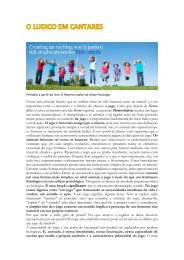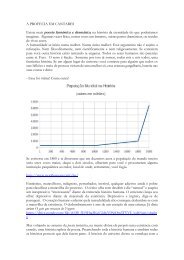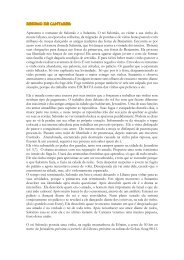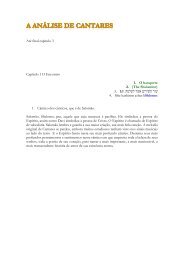Motherhood in Childhood
Create successful ePaper yourself
Turn your PDF publications into a flip-book with our unique Google optimized e-Paper software.
DETERMINANTS OF ADOLESCENT PREGNANCY: AN ECOLOGICAL MODEL<br />
• Laws limit<strong>in</strong>g access to contraception<br />
• Unenforced laws aga<strong>in</strong>st child marriage<br />
• Economic decl<strong>in</strong>e, poverty<br />
• Under<strong>in</strong>vestment <strong>in</strong> girls’ human capital<br />
• Political <strong>in</strong>stability, humanitarian crises and disasters<br />
NATIONAL<br />
• Negative attitudes about girls’ autonomy<br />
• Negative attitudes about adolescent sexuality<br />
and access to contraception<br />
• Limited availability of youth-friendly services<br />
• Absence of antenatal and postnatal care<br />
for young mothers<br />
• Climate of sexual coercion and violence<br />
COMMUNITY<br />
SCHOOL/PEERS<br />
• Obstacles to girls’ attend<strong>in</strong>g or<br />
stay<strong>in</strong>g enrolled <strong>in</strong> school<br />
• Lack of <strong>in</strong>formation or no access to<br />
quality comprehensive sexuality education<br />
• Pressure from peers<br />
• Partners’ negative gender attitudes and<br />
risk-tak<strong>in</strong>g behaviours<br />
FAMILY<br />
INDIVIDUAL<br />
• Negative expectations for daughters<br />
• Little value on education, especially for girls<br />
• Favourable attitudes to child marriage<br />
• Age of puberty and sexual debut<br />
• Socialization of girls to pursue motherhood as only option <strong>in</strong> life<br />
• Internalized gender-<strong>in</strong>equitable values<br />
• Lack of recognition of evolv<strong>in</strong>g capacities<br />
THE STATE OF WORLD POPULATION 2013<br />
33

















